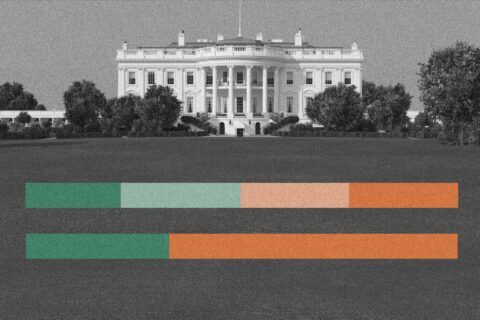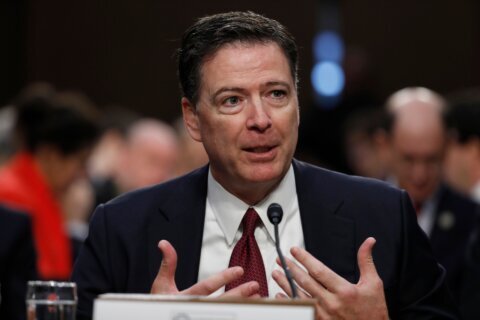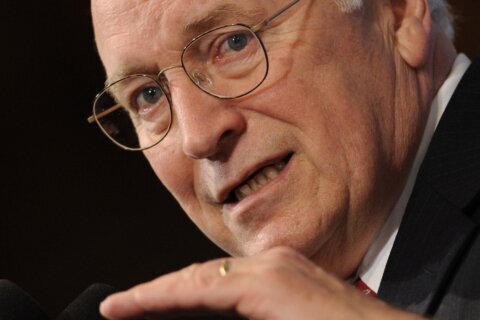This week’s Democratic presidential debates on CNN are likely to mark the next milestone in the winnowing process already shrinking the historically large field of candidates.
Over the next roughly 10 months, through the final primaries and caucuses in early June 2020, Democrats must reduce their field from the unruly herd of about two dozen candidates now contending to a single nominee.
That process will unfold through innumerable tactical decisions by the campaigns, dozens of scripted and unscripted confrontations between the candidates, and countless choices by voters assessing it all. Turning points will come at unpredictable moments, and may be fully apparent only in retrospect.
But for all of this swirling chaos, the history of earlier primary contests points to key dynamics that may guide how the party sorts through this unusually large set of contenders. As Democrats narrow the field, four questions above all seem likely to shape the process. These questions will arise in sequence, and the answers to each one will frame the choices that follow as Democrats select their nominee to challenge President Donald Trump. Here’s a look at those dynamics:
Question 1: Can anyone else crack the top tier?
To a striking extent in a field this large, Democratic voters have established a clear top tier in the race. The same candidates hold the top four positions in virtually all recent state and national polls: former Vice President Joe Biden and Sens. Elizabeth Warren of Massachusetts, Kamala Harris of California and Bernie Sanders of Vermont. Though South Bend, Indiana, Mayor Pete Buttigieg has shown immense fundraising capacity, he has fallen well behind the other four in every recent survey. No one else in the field — including once-highly touted contenders such as Sens. Cory Booker of New Jersey and Amy Klobuchar of Minnesota and former Rep. Beto O’Rourke of Texas — has consistently polled above 2% or 3% lately, if that much.
It obviously remains very early in the race, with the first real votes not coming until next February in Iowa. But the consistency of these polling numbers raises questions about whether Democratic primary voters, almost all of whom view Trump as an existential threat to the country, think they have the time or interest to learn more about candidates facing very long odds of winning.
Among Democratic professionals there’s a widespread sense that for anyone — perhaps apart from Buttigieg — to reach the inner circle of competitors one of the current big four must stumble badly.
“In these crowded campaigns there doesn’t seem to be much more room than three, maybe four, candidates,” says veteran Democratic strategist Bill Carrick. “The problem a lot of these folks have is not the quality of their candidacy, just that it’s damn hard to find any running room.”
The wisdom of the famed baseball philosopher Yogi Berra, the master of oddly insightful malapropisms, may already be applicable to the Democratic race: “It gets late early.”
Question 2: How many candidates are viable after the first 4 states?
Many party activists think that the 2020 race could feature three or four candidates competing effectively and trading off wins in different states for months.
That could happen. It’s also important to note that it has not happened since 1988. Since then the Democratic field has winnowed very quickly after the initial voting in Iowa and New Hampshire.
Since 1976, Bill Clinton in 1992 is the only Democratic nominee who did not first win either Iowa or New Hampshire. In fact, apart from Clinton in 1992, no one in recent times has even won a meaningful number of primaries without first winning Iowa or New Hampshire. As I’ve calculated, in the four contested Democratic presidential contests of the 21st century (2000, 2004, 2008 and 2016) the total number of primaries and caucuses won by any candidates who did not first win Iowa or New Hampshire is just … five, out of 200 opportunities.
Those expecting a longer and more fractionated race this time have some good reasons to believe it could happen. Traditionally, two of the key factors that have doomed faltering presidential primary campaigns are a shortage of money and a lack of media attention. But in the era of online fundraising, 24-hour cable and myriad internet news sites, the supply of both things is vastly greater than in the past.
But the third factor that has quickly winnowed the field in the past hasn’t changed: Voters don’t like to waste their votes. The history is that voters are extremely reluctant to vote for people who finish far from the lead in the earliest states because they lose confidence the candidates can win the nomination.
“There is a desperate desire to win, and that overrides everything,” says Tad Devine, a strategist in Democratic primary campaigns dating back to the 1980s who advised Sanders in 2016. “So people are not going to vote for candidates they don’t think are going to succeed. There is such great consequence that their vote carries because of Trump … that they are not going to go around and vote for some third-tier candidate.”
Iowa and New Hampshire alone, as mostly white states in an increasingly diverse Democratic Party, may be less likely than in the past to determine the absolute finalists in the race. The odds are high, most Democratic strategists agree, that the final top tier won’t be set until after votes are cast in the first four states, which include Nevada and South Carolina, states with large nonwhite populations.
But whether the process occurs after two states or four, the same critical question confronts the Democrats: How many candidates will be viable after the early contests? If in fact, voters, donors and the media consider three or more candidates fully viable heading into the huge delegate trove on Super Tuesday on March 3 — when states from Virginia to Texas to California will vote — the race will unfold very differently than if it has become effectively a one-on-one contest at that point, as in the past.
Question 3: What would a sustained 3-way race look like?
Democrats haven’t seen a race clearly divided among three major contenders since Walter Mondale, Gary Hart and Jesse Jackson dueled in 1984. In that race, Mondale, the eventual winner, relied heavily on working-class and older white voters, though he remained competitive among black voters; Hart mostly mobilized white-collar white liberals; and Jackson relied on preponderant support among African Americans, especially in Southern states, along with some white liberals.
A multi-candidate contest in 2020 could produce some parallels, though with contemporary twists. In a three-way (or more) race, Biden could likely count on solid margins among blue-collar, older and moderate whites and competitive numbers with African Americans. Warren or Sanders would likely fill the Hart position of depending mostly on white liberals, especially those with college degrees, and young people. Harris would mostly duel with Biden for black voters and with Warren and/or Sanders for college-educated whites, especially women.
Who would have the advantage in such a three- or four-way race? Whites who identify as liberals represented about 40% of Democratic primary voters in 2016, according to a cumulative CNN analysis of all 27 exit polls conducted that year. That would give Warren or Sanders a strong base.
But they would face two big hurdles. The first is that the candidates who have relied primarily on white liberals without winning significant support among African Americans, from Eugene McCarthy in 1968 to Hart in 1984 to Bill Bradley in 2000 and Howard Dean in 2004, have never won the nomination. The second is that despite some differences in their support, Warren and Sanders would largely be competing for the same pool of voters and each would be hurt if the other stays in the race.
Sanders, with his unrivaled sense of personal mission and perpetual anger at the Democratic Party leadership, seems especially likely to remain in the contest even if he’s not winning primaries or attracting more than 12% to 15% of the vote.
“Bernie has the possibility of being a Jesse Jackson kind of candidate who survives longer and has a faithful constituency, and I would assume that the money will not dry up” for him, says Carrick.
Warren also has a big enough fundraising base to run as long as she wants. It’s reasonable to expect that by next March (or even after New Hampshire next February) there will be howls from the Democratic left demanding that the weaker of the two quit the race.
In multi-candidate race featuring the current big four, Biden’s greatest competitive advantage is that none of the other three naturally competes well for the key pillar of his constituency: older and more moderate voters of all races. Voters older than 45 cast fully three-fifths of the Democratic votes last time and Biden starts the race with very little company on that side of the field; his huge advantage among voters over 45 may be the single most consistent note in early 2020 Democratic polling.
Biden’s biggest challenge in a multi-candidate race involving the current big four would be defending a competitive level of black support. It’s possible to imagine a generational split, with Harris performing very well among relatively younger black voters and Biden still holding many of those over 50. Simultaneously, Harris could compete strongly for college-educated white voters, especially women, who will also be essential for Warren.
Gender would be a wild card in such a multi-candidate contest: So far the female contenders are not consistently running better with women than with men. But if that changes once the voting begins it would be a huge factor, because women composed a clear majority of all Democratic primary voters in 2016, nearly 60%.
A large study of Democratic primary voters released Monday by the polling firm PerryUndem, which mostly studies issues relating to gender or health care for nonpartisan and liberal-leaning clients, hinted that such a dynamic could develop: While it echoed public polls in finding little gender gap in the current preferences of Democratic primary voters, it also found that women now view Warren and Harris more favorably than Biden and Sanders, and also believe the two female candidates are best suited to handle issues affecting women. That suggests such a gender gap could open later.
“Even though polling suggests Biden is the front-runner, I’m not sure he truly is,” pollster Tresa Undem said in an-email. “[It] would be different if the candidate field was weak, but it’s strong and diverse.”
Question 4: How would the one-on-one races unfold?
It’s also possible the race follows a more traditional trajectory and condenses to two plausible candidates after the first four states, with Sanders, if he doesn’t make that cut, lingering as a gadfly protest candidate.
“I think the odds are very high that we will have two and a half viable candidates, post-South Carolina for sure, and probably post-New Hampshire,” says Carrick in a view still shared by many Democrats who have run primary campaigns. “By that I mean there will be two candidates that are obviously the front-runners and who are extremely competitive with each other. There may be another candidate who has enough money and structure to stay in a little while longer” but has no real chance of winning.
In a conventional two-way race, the two most liberal candidates would face a clear demographic challenge against either Biden or Harris.
White voters might divide closely in a one-on-one contest between Biden and either Warren or Sanders: Biden would likely capture most moderate and older ones, and either senator would likely lead among younger and more liberal whites. Hispanics might also divide closely between Biden and Warren or Sanders. Then each of the two liberals would face the prospect of Biden establishing a decisive advantage against them among black voters, who made up almost exactly one-fourth of the 2016 primary electorate, according to the CNN analysis. In 2016, Hillary Clinton beat Sanders among black voters by nearly 4 to 1, the CNN analysis found.
“I think Warren has a shot at opening up an alleyway to African American women in particular,” says Devine, “but otherwise Biden with the older African American voters would have a real advantage.” (The math problem for Warren and Sanders would only be compounded if both stay in the race.)
In a race in which Harris is the finalist against either Warren or Sanders, the dynamics would be different but could still produce a similar result. Against Warren or Sanders, Harris would likely draw less support than Biden might among older, blue-collar and more moderate whites. But she would likely attract more backing than he would from younger, college-educated and more liberal whites. Again, Hispanics might split closely. Then Harris could likely count on a big majority from African American voters, giving her the overall edge.
Given these dynamics, either Warren or Sanders might have a better chance in a race in which both Biden and Harris remain viable over the long run and split black voters between them.
A race with Biden and Harris as the two finalists — perhaps with Sanders lingering — might be the most fascinating of all, and not only because of the sparks that have already flown between them. All of their differences — in age, racial background and political experience — would irresistibly cast that contest as a choice between the Democrats’ past and future. It would likely divide the party along lines familiar from the epic 2008 primary contest between Hillary Clinton and Barack Obama. Like Clinton, Biden would depend mostly on older and blue-collar white voters; like Obama, Harris would try to run even — or better — with college-educated whites and build big margins among African Americans and young people.
Since 2008, the Obama side of the coalition has expanded in the Democratic electorate, which would benefit Harris. Not only has the minority share of the vote grown since then but college whites, who are showing more receptivity to her, also significantly outvoted non-college whites as a share of the 2016 Democratic electorate (36% to 26%), the CNN analysis found.
On the other hand, it’s not clear that against Biden, Harris could equal Obama’s support among black voters, which typically reached 80% or more. And a lingering Sanders protest candidacy would likely siphon more votes from her than from Biden, because she would rely more on liberal whites than the former vice president.
No one, of course, can say for certain which, if any, of these paths the Democratic race will follow as the field narrows. The one thing that is clear is that the two nights of debates starting Tuesday will mark the next big step toward setting that direction.







